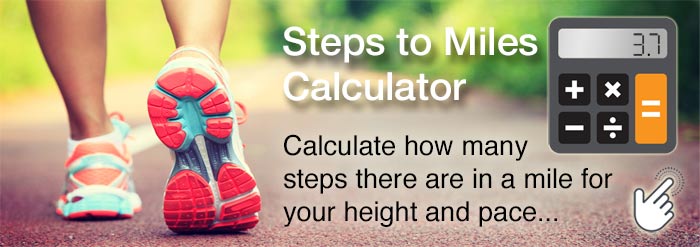The Concept of Step Count and Distance
Step counting has gained popularity as a simple yet effective method for tracking fitness and daily activity levels. The question “how many steps make a mile” arises from this growing interest in step counting. Understanding the relationship between steps and distance can provide valuable insights for personal fitness goals and tracking progress. This knowledge enables individuals to set realistic targets, monitor improvements, and maintain motivation throughout their fitness journey.
Understanding Stride Length and Its Variations
Stride length is a crucial factor when calculating the distance covered by steps. It refers to the distance between the starting point of one foot’s movement and the subsequent contact point of the same foot with the ground. In other words, it is the distance covered in a single step, measured from heel to heel or toe to toe. Understanding stride length is essential for accurately determining how many steps make a mile.
Several factors can influence stride length, including an individual’s height, leg length, and walking or running style. Taller individuals and those with longer legs typically have longer strides, while shorter individuals and those with shorter legs have shorter strides. Walking or running style also plays a significant role, as some people naturally take longer or shorter steps than others. Moreover, factors like incline, terrain, and speed can affect stride length, making it essential to consider these variables when calculating steps per mile.
Typical Stride Lengths for Adults
Stride lengths can vary significantly among individuals due to factors such as height, leg length, and walking or running style. However, it is still helpful to present average stride lengths for adults to provide a general reference. On average, an adult’s walking stride length ranges between 2.0 to 2.5 feet, while a running stride length typically falls between 5.0 to 6.0 feet.
It is essential to note that these values serve as a starting point and can vary based on individual characteristics and walking or running styles. For instance, some people may naturally take longer or shorter strides than others, even if they have similar heights and leg lengths. Therefore, using personalized stride length measurements is crucial for accurately calculating steps per mile.
Calculating Steps per Mile: Basic Formula and Considerations
To calculate steps per mile, you can use a simple formula: steps = distance / stride length. This equation allows you to convert miles to steps or steps to miles, depending on the information you have available. By using a personalized stride length, you can ensure that your calculations are as accurate as possible.
For instance, if you know that you have walked 2 miles and your stride length is 2.5 feet, you can calculate the number of steps you took by multiplying the distance (in feet) by the number of strides per foot. Since 1 mile is equal to 5,280 feet, 2 miles would be equal to 10,560 feet (2 * 5,280). Dividing this distance by your stride length (10,560 / 2.5) reveals that you took 4,224 steps to cover 2 miles.
Conversely, if you only have the number of steps you took and want to determine the distance covered, you can rearrange the formula to solve for distance instead: distance = steps * stride length. For example, if you took 2,000 steps with a stride length of 2.2 feet, you can calculate the distance covered by multiplying the number of steps by your stride length (2,000 * 2.2), resulting in a distance of 4,400 feet, or approximately 0.83 miles.
Measuring Stride Length: Practical Methods and Tools
Accurately measuring stride length is essential for determining how many steps make a mile. Several practical methods and tools can help you obtain precise stride length measurements. Here are some options to consider:
- Manual Measurement: Use a tape measure to calculate your stride length manually. To do this, walk or run a known distance (such as 20 feet) and mark the starting and ending points of your strides. Measure the distance between the two points to determine your stride length. Divide the total distance by the number of strides taken to find your average stride length.
- Mobile Apps: Various mobile applications are available that can help you measure your stride length. These apps typically use your smartphone’s built-in accelerometer and GPS to track your movement and calculate your stride length. Some popular options include Runtastic, MapMyRun, and Nike Run Club.
- Fitness Trackers: Many fitness trackers and smartwatches, such as Fitbit, Garmin, and Apple Watch, come equipped with stride length measurement capabilities. These devices use algorithms that analyze your movement patterns and calculate your stride length based on your height, leg length, and walking or running style. To ensure accuracy, it is essential to calibrate your fitness tracker regularly.
Regardless of the method or tool you choose, remember to consider factors that may influence your stride length, such as walking or running speed, incline, terrain, and individual characteristics. Consistently measuring and tracking your stride length can help you better understand your fitness levels and make more informed decisions about your fitness tracking and goal setting.
Sample Calculations: From Steps to Miles and Back
Now that you understand the formula for calculating steps per mile and the importance of using personalized stride length, let’s explore some examples to clarify the process. Here are a few sample calculations:
- Example 1: Suppose you have walked 2 miles, and your stride length is 2.2 feet. To find out how many steps you took, you would use the formula steps = distance / stride length. Plugging in the values, you get steps = 2 miles * 5,280 feet/mile / 2.2 feet, resulting in approximately 4,818 steps.
- Example 2: If you took 3,000 steps and your stride length is 2.5 feet, you can calculate the distance covered by rearranging the formula to solve for distance: distance = steps * stride length. In this case, the distance would be 3,000 steps * 2.5 feet/step, which equals 7,500 feet, or approximately 1.41 miles.
These examples demonstrate how to convert steps to miles and miles to steps using the basic formula and personalized stride length. By understanding this conversion, you can better track your fitness progress and set realistic goals based on your unique walking or running patterns.
Incorporating Steps per Mile into Fitness Tracking and Goal Setting
Understanding how many steps make a mile can significantly enhance your fitness tracking and goal-setting experience. By incorporating this knowledge into your daily routine, you can:
- Set Realistic Goals: Knowing your typical stride length and steps per mile allows you to set achievable goals based on distance rather than relying solely on step counts. For example, if you aim to walk 2 miles daily, you can calculate the corresponding step count using your personalized steps per mile value.
- Monitor Progress: Tracking your progress in miles rather than steps can provide a clearer picture of your improvement over time. As your fitness level increases, you may find that your steps per mile decrease, indicating improved efficiency in your walking or running form.
- Stay Motivated: Seeing your progress in terms of distance covered can be more inspiring and fulfilling than focusing on step counts alone. By setting distance-based goals, you can challenge yourself to achieve new milestones and maintain long-term motivation in your fitness journey.
By understanding steps per mile and utilizing personalized stride length measurements, you can optimize your fitness tracking and goal-setting experience. This knowledge empowers you to make informed decisions about your physical activity levels and maintain a more accurate and engaging approach to tracking your fitness progress.
Additional Tips for Accurate Step Counting and Distance Tracking
To ensure the highest level of accuracy in your step counting and distance tracking, consider the following tips:
- Calibrate Your Fitness Tracker: Regularly calibrate your fitness tracker or smartwatch to ensure accurate step and distance tracking. Most devices allow you to perform a calibration by walking or running a known distance (such as 400 meters on a track) and inputting the actual distance into the device’s settings. The device will then adjust its step counting and distance tracking algorithms accordingly.
- Maintain Consistent Walking or Running Form: Consistent form can help maintain a steady stride length and reduce errors in step counting and distance tracking. Focus on maintaining an upright posture, engaging your core, and swinging your arms naturally while walking or running.
- Account for Incline and Terrain: Changes in incline and terrain can affect your stride length and step count. When walking or running uphill, your steps will typically be shorter, while downhill steps may be longer. Similarly, uneven terrain or softer surfaces (such as sand or grass) can impact your step count and distance tracking. Be aware of these factors and adjust your expectations accordingly.
- Consider a Dedicated Foot Pod: A foot pod is a small device that attaches to your shoe and provides highly accurate step counting and distance tracking. Foot pods use accelerometers and gyroscopes to measure your stride length and step count, making them an excellent option for those seeking increased accuracy in their fitness tracking.
By following these additional tips, you can improve the accuracy of your step counting and distance tracking, ensuring that you have the most precise information to guide your fitness journey and help you reach your personal fitness goals.







